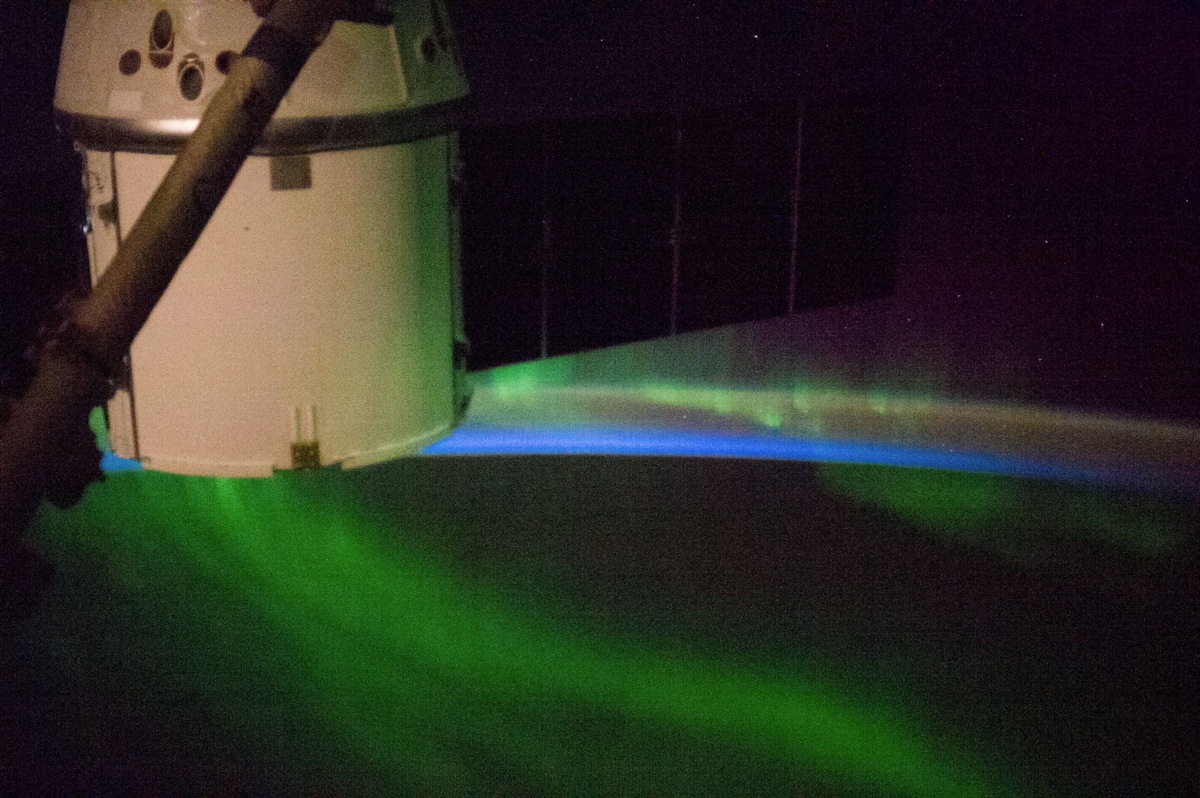SpaceX's Dragon Capsule Leaving Space Station Sunday: How to Watch Live

SpaceX's robotic Dragon cargo capsule is scheduled to leave the International Space Station and splash down intact in the Pacific Ocean on Sunday (May 18), and you can watch much of the action live online.
The California-based spaceflight company's Dragon spacecraft has been attached to the space station for about one month after launching atop the firm's Falcon 9 rocket toward the orbiting outpost on April 18. Dragon is expected to detach from the station at about 9:25 a.m. EDT (1325 GMT) on Sunday. You can watch the capsule leave the space laboratory on Space.com via NASA TV starting at 9 a.m. EDT (1300 GMT).
Dragon arrived at the station, bringing nearly 5,000 lbs. (2,268 kilograms) of supplies to the crewmembers living and working aboard, on April 20. The capsule will deliver more than 3,500 lbs. (1,587 kg) worth of science samples and cargo to ground controllers after it's retrieved from the Pacific Ocean, NASA officials said. [Six Fun Facts About SpaceX]
Splashdown is expected to occur about 3:05 p.m. EDT (1905 GMT) off the coast of Baja California. NASA TV will not broadcast the landing.
"Dragon is the only space station resupply spacecraft designed to return to Earth intact," NASA officials wrote in a statement. "Among the 3,563 pounds of return cargo are science samples from human research, biology and biotechnology studies, physical science investigations and education activities. The spacecraft also will return crew supplies, vehicle hardware and spacewalk equipment."
While other spacecraft cannot bring supplies back to Earth, they can robotically deliver supplies to the $100 billion space lab. Russia's Progress spacecraft, Japan's HTV vehicle, Europe's ATV craft and Orbital Sciences' private Cygnus vessel all transport supplies to the space station and then burn up in Earth's atmosphere after departing the laboratory.
SpaceX currently holds a $1.6 billion contract with NASA to fly 12 resupply missions to the station using the unmanned Dragon capsule and Falcon 9 rocket. This marks the private spaceflight company's third official cargo mission to the International Space Station using the launcher and capsule.
Breaking space news, the latest updates on rocket launches, skywatching events and more!
SpaceX isn't the only company that holds a resupply contract with NASA. The space agency signed a $1.9 billion deal with Orbital Sciences Corp. to fly eight missions to the orbiting outpost using Cygnus and its Antares rocket.
SpaceX officials aren't necessarily content with just flying cargo to the space station. In the future, they want to fly astronauts to the orbiting outpost as well, the company's billionaire founder Elon Musk has said. Musk plans to unveil the design for the company's manned version of Dragon on May 29.
Follow Miriam Kramer @mirikramer and Google+. Follow us @Spacedotcom, Facebookand Google+. Original article on Space.com.

Miriam Kramer joined Space.com as a Staff Writer in December 2012. Since then, she has floated in weightlessness on a zero-gravity flight, felt the pull of 4-Gs in a trainer aircraft and watched rockets soar into space from Florida and Virginia. She also served as Space.com's lead space entertainment reporter, and enjoys all aspects of space news, astronomy and commercial spaceflight. Miriam has also presented space stories during live interviews with Fox News and other TV and radio outlets. She originally hails from Knoxville, Tennessee where she and her family would take trips to dark spots on the outskirts of town to watch meteor showers every year. She loves to travel and one day hopes to see the northern lights in person. Miriam is currently a space reporter with Axios, writing the Axios Space newsletter. You can follow Miriam on Twitter.

